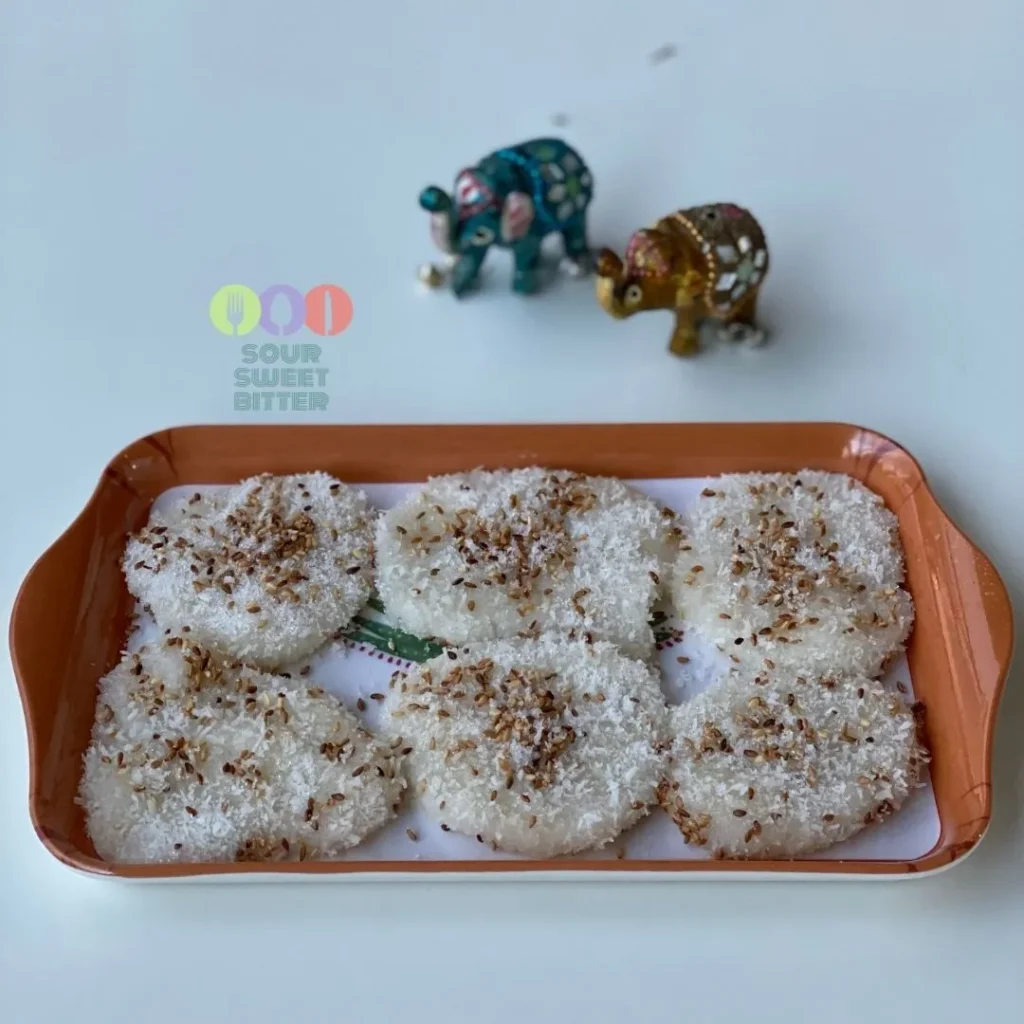Palitaw: A Sweet and Sticky Filipino Favorite
A Taste of Tradition
Palitaw, a much-loved Filipino dessert, has been part of the country’s rich culinary heritage for generations. This sticky, chewy treat made from glutinous rice flour celebrates simplicity and delightful taste. Families traditionally serve Palitaw during celebrations, festivals, or as a special snack to share with loved ones. Today, it continues to hold a special place in Filipino homes and hearts, offering a sweet connection to the past.
The Floating Delight
The name “Palitaw” comes from the Tagalog word “litaw,” meaning “to float.” This dessert gets its name from the cooking process: flattened rice dough boils until it floats to the surface, signaling that it’s ready to enjoy. The origins of Palitaw trace back to pre-colonial times when rice played a central role in Filipino diets.
Early Filipino communities showcased their resourcefulness by transforming everyday ingredients like rice into something extraordinary. The recipe spread across the archipelago, with regional variations adding unique touches, such as toppings like sesame seeds or latik (coconut curds).
A Symbol of Abundance
In Filipino culture, Palitaw symbolizes abundance and celebration. Families often prepare it during festive occasions, including fiestas, weddings, and holidays. Its sweet flavor and satisfying texture make it a favorite at gatherings. Sharing Palitaw represents warmth, generosity, and the spirit of community that is central to Filipino traditions.
During All Saints’ Day, families sometimes offer Palitaw as part of food offerings for departed loved ones. This practice highlights its deeper cultural significance, connecting food with remembrance and gratitude.
Why We Love Palitaw
Palitaw stands out for its simplicity and distinct flavor profile. By mixing glutinous rice flour with water, you create dough shaped into small, flat pieces. You boil these until they float, then coat them in a mixture of grated coconut, sugar, and toasted sesame seeds. The combination of textures—soft rice cakes, crunchy sesame seeds, and coconut—creates a truly satisfying bite.
Despite its humble ingredients, Palitaw delivers a unique taste that’s both comforting and indulgent. The preparation process, often done as a group activity, adds a layer of bonding and tradition to the experience.
Palitaw in Today’s World
While Palitaw remains a staple in traditional Filipino households, it has also adapted to modern tastes. Some variations now include ube (purple yam) or chocolate, adding new twists to the classic recipe. Filipino restaurants and street vendors frequently feature Palitaw, ensuring its continued popularity among locals and tourists alike.
For Filipinos abroad, this dessert serves as a nostalgic reminder of home. It bridges generations, connecting them to their heritage with every bite. Whether enjoyed during a holiday feast or as an everyday snack, Palitaw represents the enduring beauty of Filipino culinary traditions.
Discover Traditional Recipes from Philippines Discover Traditional Asian Recipes You may like this also: New Zealander Lolly Cake
Filipino Palitaw
Ingredients
Instructions
-
Mix water and glutinous rice flour in a bowl and knead until it reaches a thick consistency.
-
Take a small piece of the dough with a spoon and roll it in your palm. Flatten and thin out by pressing the small round ball with your hands. Repeat the same process until all the dough is used up. Arrange the dough you prepared on a sheet of wax paper.
-
Boil water in a pot. Throw the dough into boiling water.
-
After the dough starts to float to the surface of the water, boil it for another 4-5 minutes until it is thoroughly cooked.
-
Remove the cooked dough by straining the water using a strainer spoon and place it on a flat plate.
-
Roast the sesame seeds in a pan until they change color.
-
Add sugar to the roasted sesame seeds and mix.
-
Dip the cooked dough first into the grated coconut and then into the sesame and sugar mixture. Arrange on a serving plate or a banana leaf.
-
Palitaw is ready. Kain na tayo!











